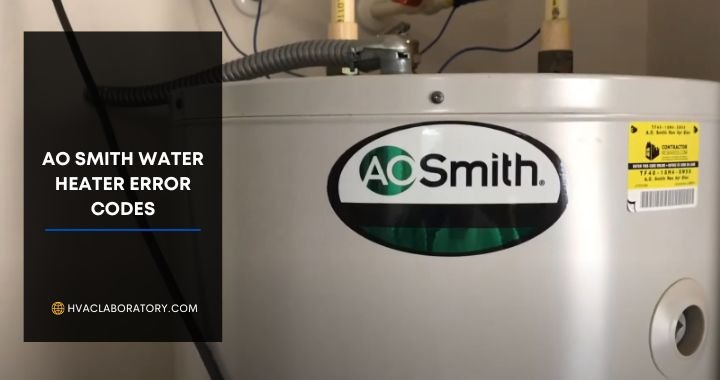
Every appliance in your home, like your car or computer, communicates with you in its own way. When a water heater displays an error code like E1, it’s like a blinking “check engine” light in your car. It’s trying to tell you something isn’t quite right. Now, you could ignore it, hoping it’s a temporary glitch. But is that the best course of action? Let’s dive deeper into what the E1 code means and why it’s usually not something you should overlook.
Understanding the E1 Error Code
The E1 error code on your Ao Smith water heater is a signal that indicates a problem with ignition. Think of this as your gas stove failing to light up properly. If there’s no spark, there’s no way to heat the water. This error doesn’t necessarily mean a huge breakdown is imminent, but it’s more like a caution sign telling you there’s a roadblock preventing your water heater from doing its job.
Now, why does this ignition failure happen? There can be several reasons. Sometimes it’s something minor like dirt or dust obstructing the igniter. Other times, it could be more serious like a faulty gas valve or issues with the gas supply. Just as with any machine, over time, parts can wear out or get clogged. And while it’s tempting to think, “I’ll just look at it later,” letting it slide can lead to more significant problems, like no hot water at all or safety concerns due to gas.
So, if your water heater doesn’t ignite and heat water, that’s a clear signal to act. Ignoring it could mean more than just a chilly shower—it might be a missed opportunity to fix a small issue before it becomes a costly repair.
What Might Be Causing the E1 Error?
Let’s break down the likely culprits of the E1 error. First up, consider the ignition assembly. Picture it as the little spark plug in your car; if it’s not clean or aligned correctly, it won’t spark, which means no heat. Dust or debris build-up can prevent the ignition process from completing.
Next, there’s the issue with the gas supply. Your water heater needs a steady flow of gas to heat water. If there’s a leak, blockage, or simply not enough gas getting through, then your water heater will struggle to perform its duties. It’s much like trying to cook on a stove with a kinked gas line—nothing’s getting through as efficiently as it should.
Lastly, let’s talk about electrical problems, which might cause the E1 error to appear. Sometimes, the wiring within the water heater can become loose or damaged. If that happens, the electrical flow necessary for ignition might be disrupted. Just like loose headphones might give you static-filled sound, these minor issues can grow into significant errors over time.
If you spot an E1 error, these are the areas to check. But before you dive into a DIY fix, ensure you feel comfortable and safe handling gas and electrical components. The best recourse might be contacting a professional if you’re unsure.
Steps to Take When You See an E1 Error
So, you’ve spotted the E1 error flashing on your water heater. What’s the next step? First off, don’t panic. Instead, start by doing a quick manual reset of the water heater. Much like when your smartphone gets a bit glitchy, turning it off and back on might just do the trick.
If a reset doesn’t solve the issue, it’s time to inspect a bit deeper. Look around the unit for any obvious signs of gas leaks or damage. If everything looks okay, next, turn off the power supply, and gently clean the igniter area to ensure there’s no dirt obstructing it. You can use a soft brush for this purpose, like cleaning dust off an old photograph.
Still seeing that E1 code? It’s probably best to call a professional technician. They can perform a more thorough check-up without the risk of harming the unit or yourself. They’ll likely inspect the gas valve, lines, and electrical components to pinpoint the issue accurately. It’s the safest and most effective way to ensure your water heater gets back to optimal performance without causing any additional headaches.
Why You Shouldn’t Ignore the E1 Error
Ignoring the E1 error code is akin to ignoring a toothache; it might not be a full-blown cavity now, but if left unattended, it can develop into something much more serious. With your water heater, neglecting this error could lead to more than just inconvenience—it could cause a full system breakdown or even pose safety risks, especially if it involves gas leaks.
Moreover, consistently ignoring error codes like E1 can reduce the overall lifespan of your water heater. It’s similar to driving your car on “low oil” notifications; eventually, wear and tear will take its toll, and you might end up with a more expensive repair or needing a replacement altogether.
In the end, addressing the E1 error promptly not only ensures consistent hot water supply but also saves you money and stress in the long run. It ensures the system operates safely and efficiently, providing peace of mind rather than unexpected cold showers or repair bills. Regular maintenance and prompt attention to such alerts are crucial in keeping your appliances in top-notch condition.